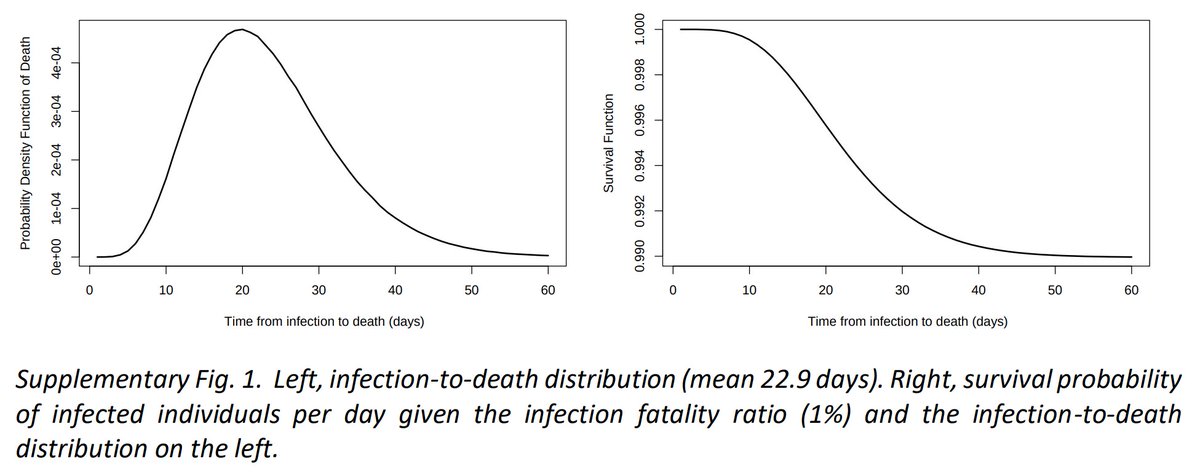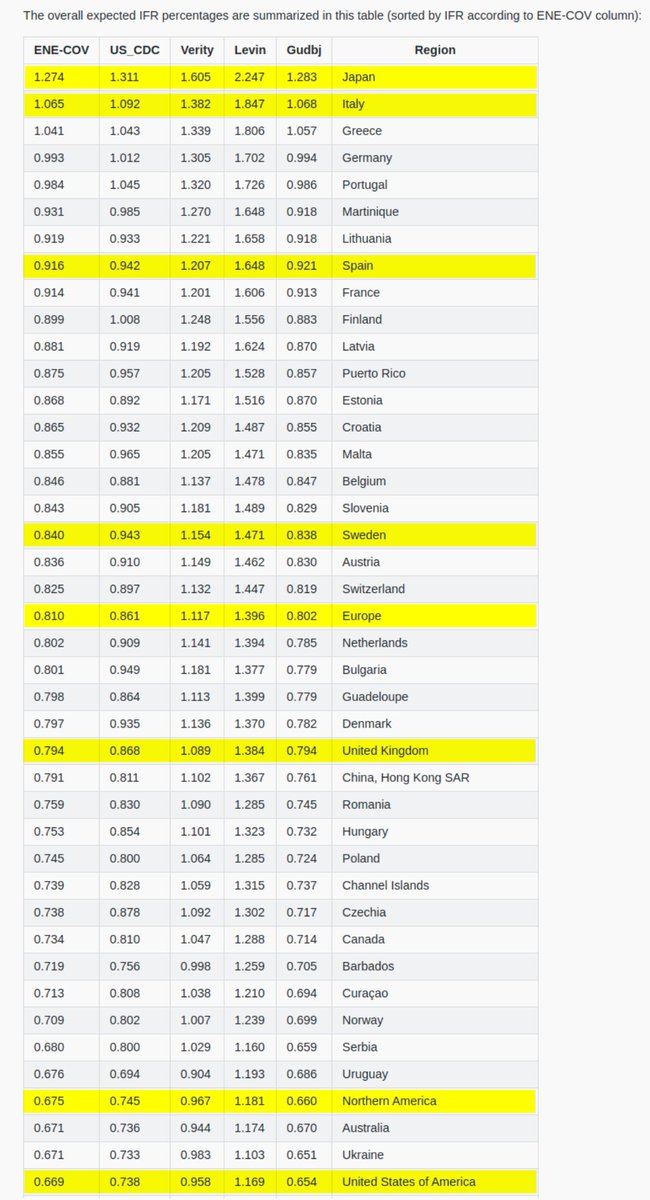
This chart shows Sweden's mortality rate & excess deaths since 1900
While COVID-19 *seems* to be a small bump in mortality, 2020 has the most excess deaths of any year since the 1918 influenza pandemic
These ~4700 excess deaths are supported by SCB:
1/n
While COVID-19 *seems* to be a small bump in mortality, 2020 has the most excess deaths of any year since the 1918 influenza pandemic
These ~4700 excess deaths are supported by SCB:
https://twitter.com/zorinaq/status/1331682386875084802
1/n

The line representing average expected mortality on the chart is a LOWESS regression
Normally demographers use more sophisticated statistical algorithm (eg. Farrington) to do so. LOWESS is kind of a sloppy technique, but it works well enough
2/n
Normally demographers use more sophisticated statistical algorithm (eg. Farrington) to do so. LOWESS is kind of a sloppy technique, but it works well enough
2/n
For more accurate results, I didn't include 2020 data in the LOWESS regression. Instead I cut off the smoothing at 2019, and assume that without COVID-19 the expected mortality would have continued its generally improving trend of the last decades through 2020
3/n
3/n
Excess deaths/deaths deficit (bottom, in blue) are the difference between the expected and observed mortality (top, in red) multiplied by the population of that year.
4/n
4/n

My analysis is similar to the one by @VoidSurf1 (
This better reflects the true impact of COVID-19
5/n
https://twitter.com/VoidSurf1/status/1313781479172964357) with one notable difference: I analyze 𝘆𝗲𝗮𝗿𝗹𝘆 mortality (01 Jan to 31 Dec) not 𝗺𝗼𝗻𝘁𝗵𝗹𝘆
This better reflects the true impact of COVID-19
5/n
Indeed some flu seasons might have 1-2 months with high mortality, appearing as high peaks on @VoidSurf1's chart
But through the whole year, COVID-19 causes far more deaths than a bad flu season, because excess deaths are spread out through at least 3 months (March-June)
6/n
But through the whole year, COVID-19 causes far more deaths than a bad flu season, because excess deaths are spread out through at least 3 months (March-June)
6/n

And the year isn't done. You might have seen my forecast of Sweden surpassing 100 deaths/day before Christmas, hence surpassing the first wave:
This will cause more excess deaths in November & December
I estimate 6-9k excess deaths by year's end
7/n
https://twitter.com/zorinaq/status/1329133636851953665
This will cause more excess deaths in November & December
I estimate 6-9k excess deaths by year's end
7/n
Currently, correcting for reporting delays, Sweden is well on its way to 100 deaths/day:
8/n
https://twitter.com/zorinaq/status/1332367369549737984
8/n
It's also worth pointing out that COVID-19 causing the most excess deaths in a year since the 1918 influenza pandemic is doubly more impressive, when one realizes that <10% of Swedes were infected by November
[only ~6% were infected by June:
9/n
[only ~6% were infected by June:
https://twitter.com/zorinaq/status/1294197776448761856]
9/n
In theory, 5x more infected (<50% of Swedes) would thus lead to 5x more excess deaths, or about 25k, which would be on par with the 1918 pandemic
10/n
10/n
Some asked me about excess mortality rate per 1000 per year (as opposed to absolute no. of excess deaths)
The 8 worst years since 1919 are:
1918 4.808
1919 1.360
1931 0.690
1937 0.604
1927 0.584
1988 0.477
1936 0.459
2020 0.450 [COVID-19]
2020 will be >0.5 by year's end
11/n
The 8 worst years since 1919 are:
1918 4.808
1919 1.360
1931 0.690
1937 0.604
1927 0.584
1988 0.477
1936 0.459
2020 0.450 [COVID-19]
2020 will be >0.5 by year's end
11/n
So even normalized by population, 2020 will end up as the year with the worst excess mortality rate per capita per year since 1937.
12/n
12/n
• • •
Missing some Tweet in this thread? You can try to
force a refresh








